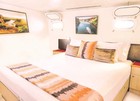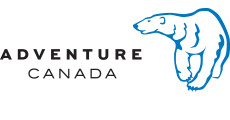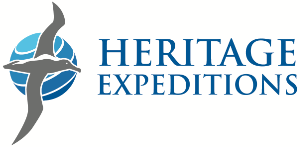Sepik Soirée - Sepik River Cruise
Highlights
• Discover Manus Province – very few travellers make it to this remote part of Papua New Guinea
• Devote an entire day to beautiful Ponam Island
• Enjoy the Ninigo Islands
|
Book now |
Ocean Class - Twin

Ocean Premium Cabin

River Class - Double

Explorer Class - Stateroom

|
Book now |
Ocean Class - Twin

Ocean Premium Cabin

River Class - Double

Explorer Class - Stateroom

|
Book now |
Ocean Class - Twin

Ocean Premium Cabin

River Class - Double

Explorer Class - Stateroom

|
Book now |
Ocean Class - Twin

Ocean Premium Cabin

River Class - Double

Explorer Class - Stateroom

|
Book now |
Ocean Class - Twin

Ocean Premium Cabin

River Class - Double

Explorer Class - Stateroom

Vessel Type: Luxury Expedition
Length: True North - 50 metres/True North II - 35 meters
Passenger Capacity: 36/22
Built/Refurbished: 2005/2023
TRUE NORTH
The TRUE NORTH allows discerning adventurers to experience wilderness in surroundings more akin to one of the world’s most exclusive hotels. Guests are able to take advantage of a number of lavish vantage points including a sundeck, a forward observation lounge, a ship’s lounge and an alfresco bar. The ship’s naturalist presents interpretative information on plasma screens and, an internet café enables convenient communication with the outside world.
A popular venue on any North Star cruise, the lower deck dining room offers the ultimate in comfort and uninterrupted vista – large panoramic windows ensure that guests never miss any of the action, even when they are enjoying the ‘finest in fine dining’. All cabins feature stylish décor, en-suite facilities, in-house entertainment and satellite telephones. The Explorer Class staterooms and the River Class cabins offer king size beds that can be converted to singles and the Ocean Class twins feature roomy single beds.
Multiple expedition boats provide guests with greater opportunity to do “what they want, when they want” and, to add yet another dimension to adventure, most cruise options feature an onboard helicopter!The purpose built TRUE NORTH is able to explore the upper reaches of shallow river systems – guests need only step out of their cabins to experience wilderness and, the latest in computer controlled motion stabilizers ensures a comfortable ride.
TRUE NORTH II
TRUE NORTH II features a more intimate experience with just 22 guests and a combined saloon/lounge. The dining salon features a stunning ‘boardroom’ setting and the revered True North dining experience. There is also a sundeck, outdoor bar deck and a dedicated sports deck.
All cabins feature ensuite or private facilities with in-house entertainment and satellite telephones. The Explorer Class staterooms and River Class cabins offer queen-size bedsand the Ocean Class cabins feature roomy bunk-configured singles.
Just like the TRUE NORTH – TRUE NORTH II is purpose-built to explore coastal areas including the upper reaches of shallow river systems – guests need only step out of their cabins to experience wilderness. But the adventure doesn't stop there! Multiple adventure boats provide guests with greater opportunity to do “what they want, when they want” and, to add yet another dimension to adventure, most itineraries feature an onboard helicopter!
And again, just like they are on TRUE NORTH, the crew of the TRUE NORTH II are generally young Australians who create a truly authentic onboard experience. Our crew are always very much part of onboard life - you may even feel as though they are having just as much fun as you are! That’s because they are – every day is an adventure for the crew as well and you will not be able to resist their enthusiasm and passion!
Unlike more conventional cruise experiences – True North crew are encouraged to interact with our guests. They will uniquely chaperone your every experience providing assistance, interpretation and genuine company. They will bait your hook and carry your SCUBA tank but they will also join you for dinner and entertain in the ship’s lounge. And not forgetting that they will also prepare fine meals of distinction, maintain your cabins with our renowned degree of attention and safely navigate ship, boat and helicopter to each destination. Guests on a True North adventure cruise never fail to recognize the outstanding involvement of the crew - they are one of the reasons that an adventure on the TRUE NORTH is not just another expedition cruise!





Helicopter Flights
Inclusions
• Voyage on board in selected cabin category
• All meals while on board with destination themed dining
• All adventure boat outings and excursions
• Non-alcoholic beverages
• Fishing and snorkelling equipment for use throughout the voyage where applicable
• Cafe style coffees and tea on board
• Transfers as per the itinerary
• Return charter flights ex Cairns ARE INCLUDED in the tariff
Exclusions
• International and domestic flights
• Passport and visa costs where applicable
• Travel Insurance
• Alcoholic beverages
• Scenic helicopter flights
• Visitors fee
• Transfers not listed in the itinerary
• Helicopter flights can be purchased additional to the indicated tariff as a package or individually
Our Associates Include







